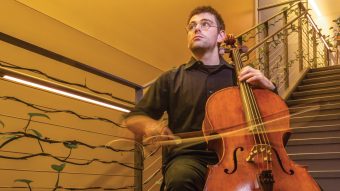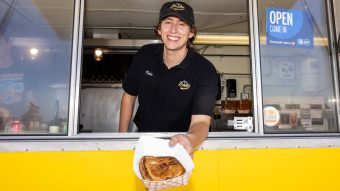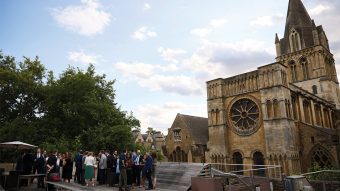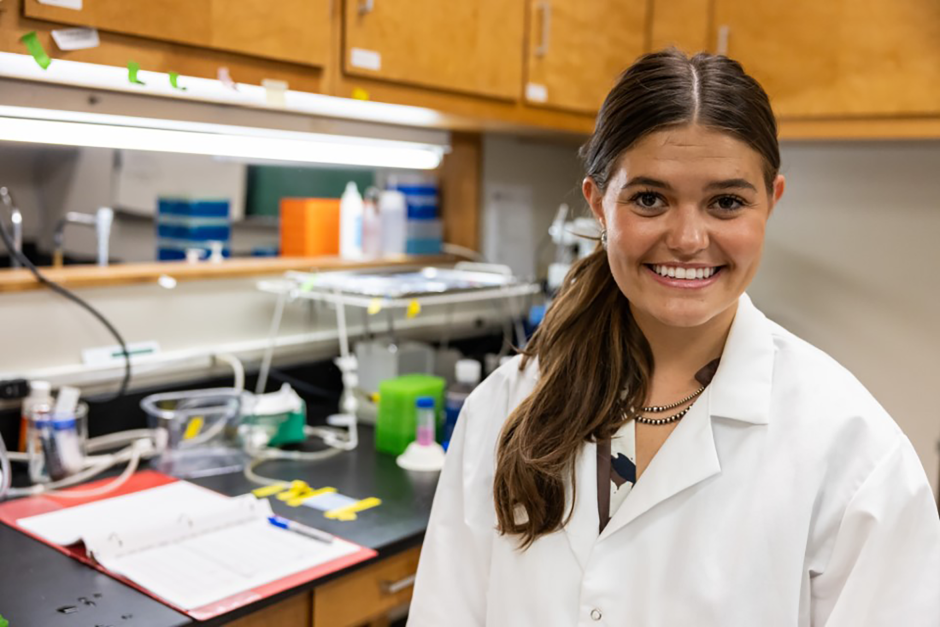
August. 11, 2025
Contact: Brian Consiglio, consigliob@missouri.edu
Photos by Abbie Lankitus
When Denver native Millie Mayo was applying to veterinary schools, the University of Missouri stood out because of its unique emphasis on hands-on learning.
“Most vet schools have you spend three years in the classroom and one year in clinics, but Mizzou gives you two years in the classroom and two years of clinics,” Mayo said. “That extra year in the clinic gives Mizzou students a huge leg up when we go to take our national board exams, which is a clinically based test.”
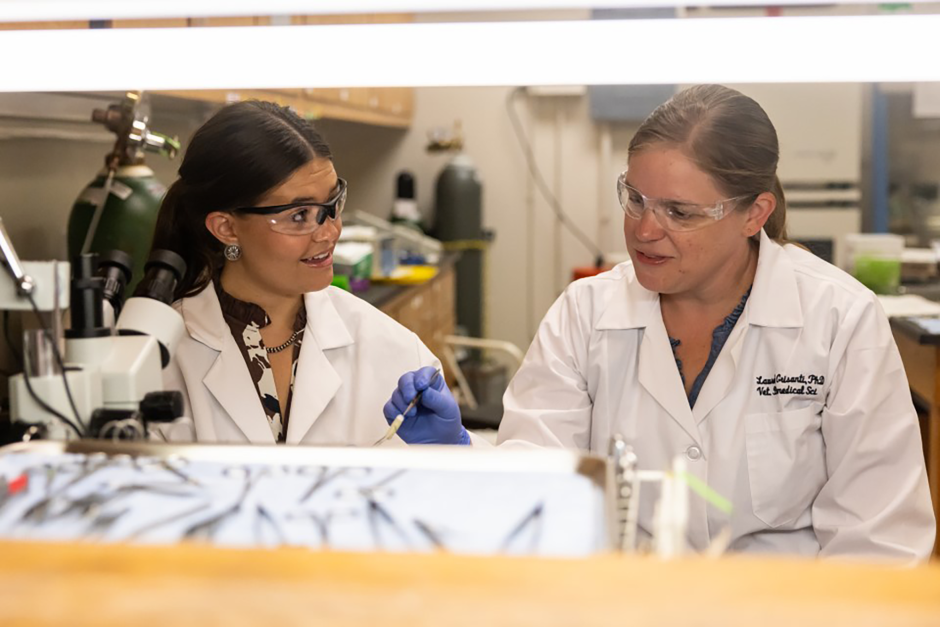
Hands-on learning, known at Mizzou as the Missouri Method, is a university hallmark. This summer, Mayo worked in a research lab studying heart failure as part of the College of Veterinary Medicine’s Veterinary Research Scholars Program (VRSP).
This was Mayo’s second summer as a VRSP participant. The program — which continues to grow each year — is well-known for being the best of its kind in the country, continuously attracting the brightest veterinary medicine students to Mizzou each summer to research cattle nutrition, equine health, cancer, genetics and other topics that impact both animals and humans.
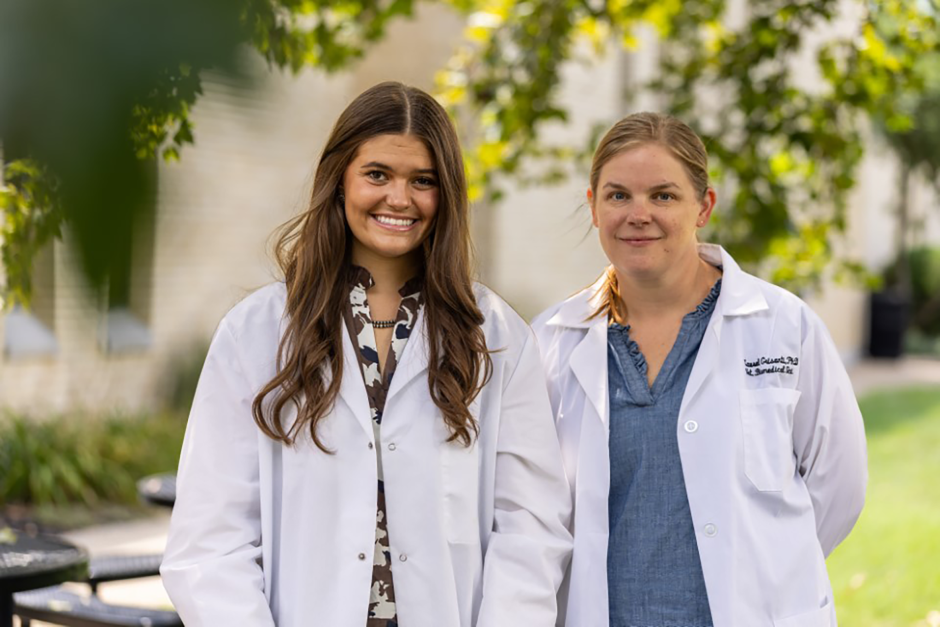
Mayo was one of approximately 40 veterinary students — some of whom came to Mizzou from other universities — who were paired with a Mizzou faculty mentor while leading their own research project. In August, Mayo presented her research at the National Veterinary Scholars Symposium in Spokane, Washington.
Mayo studied a receptor called Death Receptor 5, which plays a natural role in regulating apoptosis — the programmed death of cells.
“By better understanding the role this receptor plays in patients with heart failure, that could potentially lead to improved treatment options one day,” Mayo said.
The program provided an intersection for Mayo’s coursework and clinical work, and both informed each other in valuable ways.
“VRSP is the epitome of the Missouri Method,” said Tamara Hancock, an assistant teaching professor in the College of Veterinary Medicine and co-director for the VRSP. “We strengthen our research community here at Mizzou, and the relationships last even when our scholars become alumni. It’s the people at Mizzou’s College of Veterinary Medicine who make it such a fun and memorable learning experience.”
Mayo praised her faculty mentor, Laurel Grisanti, an associate professor in the College of Veterinary Medicine who taught Mayo in a physiology class.
“She has been so instrumental in my success here at Mizzou,” Mayo said. “She genuinely cares about me and my well-being, and she has made the VRSP such an enjoyable experience. It’s inspiring to think my research can make a real-world impact, and Dr. Grisanti has been such a kind mentor and friend to me both in this program and as a Mizzou vet student.”
Participating in the VRSP not only gave Mayo hands-on research experience, but it also allowed her to network with other talented students.
“Walking through the showcase at the end of the summer when everyone presents their posters, it’s obvious that we don’t mess around; we come to play,” Mayo said. “It makes me so proud to represent Mizzou.”
What impresses Mayo the most? Mizzou’s faculty members and their infectious enthusiasm.
“The faculty here at Mizzou put in so many hours of work outside the classroom to help set students up for success,” Mayo said. “They are so passionate about research and training the next generation of researchers. Participating in VRSP helped me realize research isn’t scary; it’s fun.”
With plans to graduate in 2027, Mayo aspires to a career performing surgeries as a mixed animal veterinarian.
“When I first came to Mizzou, I didn’t know anyone,” Mayo said. “But the mentorship I’ve had from Dr. Grisanti and her team through the VRSP has made me feel like I have a family in the College of Veterinary Medicine. It has been such a joy to hear them rooting for me.”

